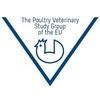Using Phytase Matrix Value with the LCF
Good Evening I have a question regarding using the phytase matrix value in the least cost formulation software. Should I enter the Calcium value, or should I leave it Zero? Dealing with the calcium figure is not like the others, because we don't have Total calcium, and available calcium in the formulation, we have only calcium which will assume that it is 100% available. for the energy, we have Total energy and ME, for phosphorus we have the total and the available, Amino acids we have total and digestible. but for the calcium we have only one figure, so I believe that the figure for the calcium should be Zero, because we assume that the calcium is 100% available. Please share with me your ideas.
Hello from Colmenar Viejo, Spain. Enzymes need a certain level of substrate in the feed so that they work like a key-lock complex. If we take look to ruminants, these poligastric animals can digest plenty of various fibrous materials due to their capacity - due to the microflora in rumen- to produce fibrolytic enzymes. Monogastrics, on the other hand, don´t show this capacity - some fermentation can take place in pigs-age related-, therefore we need external enzymes to help digestion of NSP(mainly) but also P retained in the IP6 (phytate). Enzymes therefore do have an effect on the substrates they are produced to target; the effects are very variable depending on the efficacy of all those, but certainly there is an effect. I will not enter in huge discussion, but among other effects, E digestibility is generally increased, by means of different mechanisms. What matrix do/offer, is simply a very useful artefact to use this advantage at the time of LCF. So that we can eventually reduce cost of tonne produced. But if you would add enzymes on top of a diet, and always depending on the nature of that feed (susbtrate %, E level, etc.), eventually you could improve performance of animals. That´s a simple and quick view of enzymes and those companies offering matrices do have plenty of good quality research, which indeed needs to be promoted in some way. Enzymes are an excellent tool to extract more nutrients from our feeds. It is not an invention, it is a very useful and well established tool already for many years. Take care, stay safe...
.jpg&w=3840&q=75)

Effects of superdoses of phytase on peaking Hy-Line W-36 laying hen egg production and egg quality
Very good comment, specially when now in the market there is a prevalence of multi enzymes cocktails. Substrate is key and the smaller the substrate, smaller the benefits

In my viewpoint, you need to consider matrix value of Ca as well; otherwise, and as mentioned by others, Ca level in your diets incased that has adverse effect on Phytase.
Below I added some considerations regarding Phytase and its matrix value. I hope this would be applicable.
Factors affecting phytase activity
Mineral content
Although doubted in some literature, high level of dietary calcium has been reported to adversely affect phytase efficacy either via complexing with phytic acid in the small intestine and forming an insoluble complex or via binding to the active site of phytase enzyme. Similarly, higher levels of iron or zinc make insoluble complex with phytate and subsequently decrease the phosphorus releasing efficacy of phytase. Recently, high dietary sodium has been revealed to decrease phytase activity.
Inspection of the mineral content of farm drinking water should be conducted at least once per year as most water of desert areas contains very high level of some minerals that could hinder phytase activity. Phytases that efficiently hydrolyze phytate in the proximal gut (crop and proventriculus) will counteract the adverse effect of high dietary minerals.
Phytase matrix value
• Although each phytase product has its own matrix value that published by the manufacturing company, these matrices are not derived in the same way. The matrix involves values for Av. phosphorus, calcium, protein/amino acids, energy, and sodium.
• Research results and field experiences revealed that there should not be a fixed matrix value for phytase in all feed formulations.
• Poultry nutritionists can have their own matrix values that can be more reserved and have more safety margin than the values published by the manufacturing companies.
• Many factors influencing phytase efficacy that need to be taken under consideration
Variability in Responses
A dilemma faced by the users of exogenous enzymes is that bird responses to feed enzyme addition are variable and not entirely predictable. The factors contributing to these inconsistencies are complex, involving enzyme (enzyme source, enzyme dose, side activities present), diet (ingredient quality, diet composition, diet form, particle size), and bird (species, age, sex, individual variation) factors and their interaction. Selected dietary and animal factors of importance are briefly highlighted below.
Dietary Nutrient Density
In most cases, the use of exogenous enzymes can be beneficial only if the dietary nutrient density is marginal.
The use of microbial phytase is potentially useful and appropriate only for diets with suboptimal phosphorus levels and containing significant levels of plant-derived ingredients.
Age of Birds
theory, the potential benefits from feed enzyme additions will be greater when the digestive system is simpler, as in young birds. Young birds, especially during the first few weeks of life, have an underdeveloped digestive enzyme capacity compared with adult birds (Noy et al., 1995 ).
This belief, however, is not always true; sometimes responses may be greater during the finisher phase. The effect of bird age on recommendations of enzyme doses is a related issue, as it has not been fully elucidated (Cowieson et al,. 2006).
Inclusion Level of the Target Feedstuff
The higher the inclusion level of the target ingredient, the greater the enzyme response will be, as it will proportionately increase the contents of the substrate for enzyme action or the antinutrient(s) that is causing the problem (e.g., xylanase and wheat inclusion level) in diet formulations.
Performance Level of Control Birds
The degree of response is also governed by the existing level of performance in animals fed the unsupplemented diet. If the performance is poor, whether due to poor husbandry, marginal nutrition, or stress, then responses will be greater with enzyme addition.
Quality of the Target Ingredient
In general, the quality of an ingredient is related to the concentration of antinutrient (e.g., phytate contents, soluble NSP contents in wheat) or the content of available nutrients or energy, all of which can vary widely among batches of an ingredient.
The lower the ingredient quality, the greater will be the magnitude of improvements with added enzyme.
For example, apparently the responses of wheat AME to supplemental xylanase are determined, to a great extent, by the initial AME of the wheat sample. Large variability, ranging from 2,200 to 3,820 kcal/kg of DM, in the AME of wheat samples has been reported in the literature (Noy et al., 1995, Choct et al,. 1999). Low quality wheat samples, assaying less than 2,870 kcal/kg of AME, have been shown to respond remarkably to enzyme supplementation, whereas good quality wheat samples show practically no increment in AME.

I agree with you and never forget the matrix for sodium because sodium excess can affect kidney performance but I don't consider the phytase matrix for amino acids because it is not really clear how much amino acids can be bonded to phytase and, on the other hand, if you add 0.02 % more amino acids it is not harmful.
However, if you don't consider calcium in matrix of phytase, the ratio of ca/p can be destroyed.
In reference to calcium, the enzyme makes more available what is already supplied by the ingredients but it cannot add something that does not contain. So, if we work our formulations based on total calcium, I tend to agree with Rami Sebai that the phytase enzyme must not have a calcium value.
On the other hand, if we formulate for available calcium, as we do with phosphorus, we should include a calcium value in the matrix.
Hello once more. There are ways in formulating with Ca matrix without affecting performance, respecting the level to be declared in the label - very important - and benefiting the phytase effect in a more efficient usage of the Ca provided in the diet. I wrote it a while ago...
Cheers and great Sunday from Colmenar Viejo, Madrid.
A couple of quick remarks on this topic. When phytic acid is hydrolysed by phytase and the mucosal phosphatases in the intestine the only two direct products of this are myo-inositol and phosphate. We have measured the appearance of both of these in multiple experiments and this is clear evidence of phytase efficacy and its compatibility with endogenous phosphatases in the intestine. All additional nutrients that phytase influences are as an indirect effect associated with the removal of the antinutritional effects of phytic acid. This antinutritional effect is associated with the electro-negativity of phytic acid at pH >1.1 as the phosphate groups become increasingly de-protonated and negatively charged as pH rises.
Calcium, like other cations will interact with phytic acid (especially fully phosphorylated) and form salts that are poorly soluble at pH >4. There is abundant evidence in the scientific literature of phytase improving the bioavailability of cations and the negative effect of phytic acid on the same - both in humans and animals. The LCF issue is an interesting one because we know that phytase improves calcium digestibility via the mechanism mentioned above but most nutritionists today do not formulate with digestible calcium matrices. In a sense our understanding of phytate and phytase mode of action is more advanced than our ability to formulate diets on a digestible or available calcium basis. A temporary fix is assigning a total calcium matrix to phytase where it acts like a digestible calcium proxy and keeps the digestible P to digestible Ca ratio in the right place for optimal bone growth and FCR. It works well in most cases but we are moving toward a digestible calcium formulation system and so in the coming years this will all be a lot easier to navigate. In the meantime I would encourage everyone to use a total calcium matrix on phytase because otherwise the diet will end up with excess digestible calcium, too much limestone being drawn in when inorganic P sources are displaced and likely a range of negative effects on litter moisture content and animal performance.


Well, interesting, but I am not so optimistic: as I am from the country of limestone - Italy - I well know how large the variation in Ca digestibility can be among various geological origins of limestone, even without mentioning the particle size issue...
The other question of giving Phytase a Ca value or not, in my experience when many years ago in Europe we started to give a Ca value to Natuphos - the original matrix gave only Av.P -, the funny problems of pasted vents and fecal buttons in chicks below 12 days of age disappeared...
Many companies before that were using Natuphos but not in the prestarter diet because of this problem.
So I give Phytase a total Calcium value, but to be sure of not just "playing with numbers" I have a nutrient called "analytical Calcium" that follows its name, in all ingredients, and I fix a minimum constraint of 0,5% for it in my diet, as a safety net...
Not perfect, but workable.
Regards,
Franco Calini
Dear All,
formulating in Bestmix, I also considered the total Ca and dig./av. P for the added phytase; and energy (ME) and AA for the NSP enzymes only. On this way I estimated to be on the safe side, because the nutrient matrix values indicate the amount of nutrient that could be released when the enzyme is added.
In the past 10 years it became a trend to request and offer “matrix values” for almost all additives, especially for NGP’s like phytogenics, acidifiers..
As nutritionist, I cannot agree on using “the matrix values” for all additives. I can only agree that - substrate is key- and there are no nutrients “caged” in the substrate for each additive used, and even not for all enzyme products added. They are nice in the feed price calculation, but not realistic for the animals, from the bioavailability point of view.


PROTEIN HYDROLYSATE POWDER - Soya Base
Hello to all
The relationship between calcium and phosphorus and the relationship between these two elements with the actions of the bird's physiology and other elements with the inhibitory effects with the climatic conditions for the absorption of these elements were not discussed. Because the permitted level of use of these elements is with the dynamic power and requirement of the bird without having any harmful or inhibiting actions and ultimately the effect is on the performance of the bird. Or considering the quality of sources of elements with accessibility or the degree of purity of these elements. By meeting the bird's needs and discussing economic justification. The effects of the amount of soluble and insoluble polysaccharides in the diet on absorption, especially the actions of the body's cell surface, are based on the activity of digestive enzymes, meaning endogenous. Please do not make general statements. Search for key content like Dr. Aaron Cowieson. I thank him for his scientific content.
Abstract
The present experiment was designed to investigate the effects of different levels of commercial enzyme supplemented with diets containing different levels of hull-less barley on performance and egg quality in laying hens. For this purpose, 216 Hy line W36 laying hens were used based on a completely randomized design in 6 experimental treatments with 6 replicates( 6 laying hen per replicate). Treatments were 0, 20, 30, 40, 50 and 60% hull-less barley with three level bioform enzyme with ß-glucanase(550 U/g) and xylanase(800 U/g) (0, 0.5 and 1 g/kg diet). The results of the present study showed that the use of enzyme in experimental diets did not affect the measured variables of performance, but adding it to experimental diets caused a significant reduction in the weight and thickness of the shell and did not affect other egg quality characteristics. Also, diffleyerent levels of hull-less barley did not significantly affect on parameters such as thickness and strength shell, but of, performance parameters and some egg quality traits, such as the thickness of white egg, HU unit and yolk color showed a significant difference.Therefore, this can be concluded from the results of the peresent study, that the commerical enzyme did not improve the performance and some of the quality parameters of the egg and on the other hand, reduced the quality of shell. The use of hull-less barley in the diet of laying hens caused a decrease in egg quality despite strength shell,also had a negative effect on the the yolk color and the thickness of the white egg.
Key words: Exogenous Enzyme, Egg Quality, Layer Hens, Non Starch Polysaccharid


METHPLUS® - Replacer of DL-Methionine
This is quite opposite of expectations. Was it related to decreased feed intake, due to more energy available?


CYSTEAMINE HCL 50% - Digestive Enzymes






.jpg&w=3840&q=75)
















